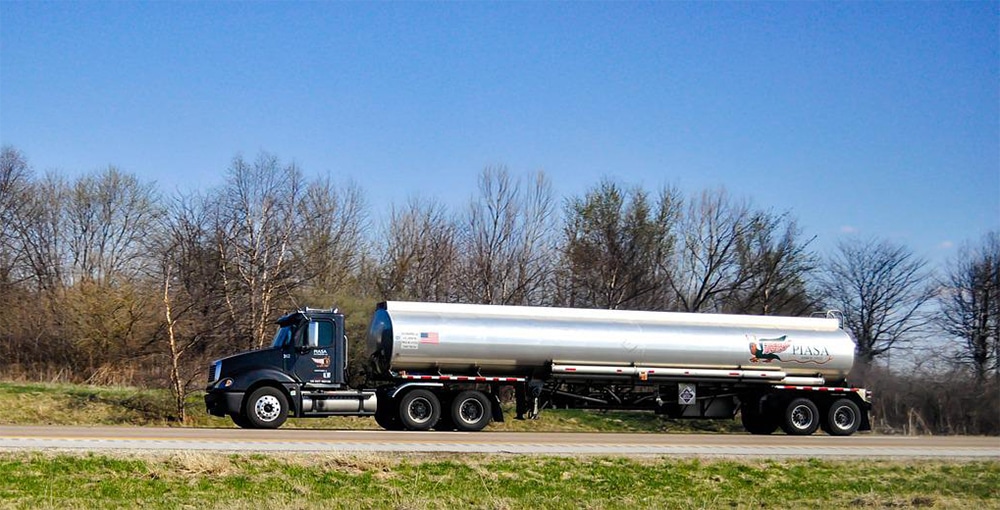How Many Truck Drivers Are in Illinois?

Big trucks are a necessary part of modern-day life. It can be a little scary to drive near large automobiles like 18-wheelers, though. These vehicles weigh significantly more than standard passenger cars and can cause a lot of damage in a truck accident.
For the time being, tractor-trailers are still a staple feature of most interstates, so just how many truck drivers are in Illinois alone?
Number of Registered Truckers
Truckers must have a commercial driver’s license (CDL) to operate large trucks like tractor-trailers.
There are approximately 53,560 CDL truck drivers in the Chicago-Naperville-Arlington metropolitan area. This region has the third-highest trucker employment rate out of all metropolitan areas in the United States. Illinois truck drivers are also some of the most well-paid, with Danville and Kankakee ranking among the top 10 best-paying metropolitan areas.
There were 71,486 heavy truck drivers employed in Illinois in 2014. Projected growth puts that figure closer to 77,000 by 2024.
There were significantly fewer light truck drivers in 2014, with only 39,941 working in Illinois. Based on projected growth, the Illinois light truck employment rate might hit closer to 43,000 by 2024.
Different Types of CDLs
There are three different classes of CDLs. Each class allows you to drive different types of vehicles. These include:
Class A CDL: This is the type of license you’ll need to operate any vehicle or combination of vehicles that have a gross vehicle weight rating (GVWR) of 26,001 pounds or more. With a Class A, you can drive:
- Tractor-trailers
- Tanker vehicles
- Livestock carriers
- Flatbeds
- Truck and trailer combinations
- The majority of class B and C vehicles
Class B CDL: It allows you to operate single vehicles that are not hitched to trailers, including commercial trucks that have attached cab and cargo areas, with a GVWR of more than 26,000 pounds. This license also permits drivers to operate trucks with detached and towed cargo vehicles so long as they weigh less than 10,000 pounds. Automobiles that fit this bill include:
- Large buses
- Segmented buses
- Box trucks
- Dump trucks
- A few class C vehicles
Class C CDL: This is required to operate single vehicles with a GVWR less than 26,001 pounds and that can tow another vehicle weighing 10,000 pounds or less. Transporting over 16 passengers is also permitted with this license. Vehicles covered by a class C license include:
- Smaller buses
- Hazmat vehicles
- Tank truck
- Passenger vans
- Combination vehicles not included in class A and B
CDL License Requirements
A Class D license is the most common type of driver’s license. This license is the one that most people get as teenagers or in their early 20s when they need a reliable way to get to school and work. Your driver’s license shows that you have the knowledge required for safely operating a passenger vehicle that weighs less than 10,000 pounds.
Driving a large truck requires highly specialized knowledge. A truck driver’s CDL is their proof that they have the required knowledge to safely operate such a large vehicle on the road.
In Illinois, you must be at least 18 years of age to operate large trucks intrastate and at least 21 to transport passengers or operate in interstate commerce. A driver has to also go through the following to obtain a CDL:
- Secure a Commercial Learner’s Permit (CLP): A CLP allows a learner to practice driving large trucks on public roads, so long as a qualified CDL holder is along for the ride. To get a CLP, drivers must first pass multiple knowledge tests and provide proof that they are medically qualified. Their driving records for the past ten years will also be checked in not just Illinois but all 50 states and Washington D.C.
- Undergo Entry-Level Driver Training (ELDT): First-time class A and class B drivers are required to participate in ELDT with a registered training provider. Drivers who are upgrading their CDLs from Class B to Class A are also required to go through ELDT, as do those seeking school bus, hazardous materials, or passenger endorsements. ELDT includes both theory and behind-the-wheel training.
- Pass the CDL Skills Test: After a driver has had their CLP for 14 days and completed all applicable training, they can move on to the Skills Test. The Skills Test is comprised of three different sections: the Basic Controls Test, the Vehicle Inspection Test, and the Road Test.
Truck drivers who operate certain commercial vehicles will need to pass additional tests. Once passed, they will receive endorsements for that specific vehicle type on their CDLs. For example:
- T – Double or triple trailers
- N – Tank vehicles
- S – School buses
How Many Trucks Travel Through Illinois?
When it comes to exports, “Illinois ranks as the sixth busiest state in the U.S.” Our state’s ports along the Mississippi River with access to the Atlantic Ocean by way of the Gulf of St. Lawrence make Illinois a prime place for the trucking industry to thrive.
Truck drivers in Illinois are responsible for moving exports like:
- Corn
- Soy beans
- Motor vehicle parts
- Light petroleum oils
- Cell phones
- Aircraft engine parts
- Medications
- Modems
With all this commerce going on, you’ve undoubtedly found yourself traveling alongside tractor-trailers and other large trucks.
Truck Accident Dangers
Based on the number of licensed CDL drivers on the road, truck accidents are inevitable. Trucking accidents can occur on interstates, highways, and any other road where they might travel. Common causes of truck accidents include:
- Driver fatigue
- Speeding
- Reckless behavior
- Poor driving conditions
- Distracted driving
Despite the training they put into earning their CDLs, many truck drivers are at the mercy of their employers. Trucking companies often prioritize profits and push their tractor-trailer operators to continue driving when tired or if they encounter dangerous conditions just to meet delivery schedules.
You deserve help if a truck driver in Illinois caused an accident that injured you. Knowing where to find the right help can be a challenge, especially when you’re suffering from physical injuries. At Schweickert Ganassin Krzak Rundio, LLP, we understand how sensitive this period of your life can be. If you are ready to discuss your options with a Peru truck accident lawyer, call us today to schedule a free case review.








